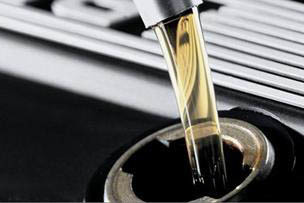Composition and Properties of Crude Base Oil in Industrial Lubricants
Release time:
Apr 16,2025
However, in recent years, with the acceleration of lubricant product updates, more stringent requirements have been placed on lubricants.
For a long time, lubricating oils have always met the constantly evolving product specifications by changing the type and dosage of additives, while base oils usually do not change much. However, in recent years, with the acceleration of lubricant product updates, more stringent requirements have been placed on lubricants. If it is required that the lubricating oil can meet the fuel economy indicators, provide better protection for the engine, extend the oil change period, and lower the drain, it is very difficult to meet the performance requirements of the new generation of lubricating oil by improving the additive performance through conventional solvent refined base oil, and even without energy rejection. Only by using unconventional hydrogenated base oils and optimizing their performance through matching additives can we meet the continuously increasing performance requirements of lubricating oils.
The physical and chemical properties that industrial lubricating oil-based fine oils should possess include the chemical composition of mineral base oils, which include high boiling point, high relative molecular weight hydrocarbons, and non hydrocarbon mixtures. Its composition is generally composed of alkanes (straight chain, branched chain, multi branched chain), cycloalkanes (monocyclic, bicyclic, polycyclic), aromatic hydrocarbons (monocyclic aromatic hydrocarbons, polycyclic aromatic hydrocarbons), cycloalkyl aromatic hydrocarbons, as well as oxygen-containing, nitrogen-containing, sulfur-containing organic compounds and non hydrocarbon compounds such as gum and asphaltene. Base oil is a mixture of different types of hydrocarbons, generally including saturated hydrocarbons, aromatic hydrocarbons, polar organic compounds containing sulfur, oxygen, and nitrogen, as well as non hydrocarbon compounds such as gum and asphaltene. Hydrocarbons are the main components of lubricating oil. For distillate lubricants, the distribution of hydrocarbon carbon numbers is approximately within the boiling range of 350~535 ^, with an average relative molecular weight of 300~5 (X ^ residue lubricant has a hydrocarbon carbon number greater than (^, boiling point greater than 500~535<€, relative molecular weight greater than 500). The content of non hydrocarbon components generally accounts for only a small proportion, but it plays an important role in the processing and performance of lubricants. An ideal lubricant base oil should have the following properties:
① Appropriate viscosity and good viscosity temperature performance;
② Low evaporation loss;
③ Excellent low-temperature mobility; ④ Good oxidation stability;
⑤ Suitable solubility for oxidation products and additives;
⑥ Good anti emulsification performance and air release value.



